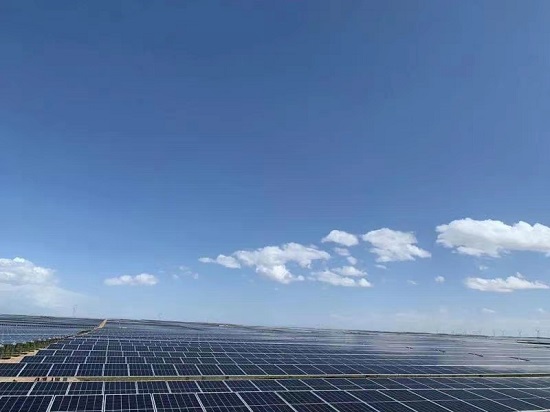Solar power facilities can coexist with butterflies, bees, sheep !
EDF Renewables operates a 23.4 MW agri-PV project to support local wildlife and agriculture. Since its installation in 2009, the project has pioneered the grazing of bees, butterflies and sheep. sheep are “managing” the vegetation under local solar panels.
Energy transition to renewables
There are many ways to achieve the energy transition to renewables, some of which are more nature-sensitive than others.
As energy expands over the next few decades, more land and water will be taken up to support energy infrastructure, running counter to some of the environmental goals seen as the foundation of renewable energy deployment.

Solar power facilities can coexist with butterflies, bees, sheep
Rooftop solar
Distributed rooftop solar is one way to prevent energy expansion, another way is photovoltaic farming, the coexistence of agriculture and solar energy that not only effectively supports local wildlife and farming practices, but also adds plenty of zero-emission energy to the grid.
The AgriSolar Clearinghouse is an information and networking organization dedicated to connecting farmers, landowners and solar developers working around agri-PV. It shares a case study of a solar farm that supports not just one species, but multiple species.
The research project is the 23.4 MW Arnprior solar project in Ottawa, Canada, developed by EDF Renewables (EDFR), covering an area of 180 acres and capable of meeting the energy needs of approximately 7,000 households during peak usage periods.
Groundbreaking project
The groundbreaking project was completed in 2009, when photovoltaic capacity across Canada doubled. Six years after the project was completed, one of the landowners proposed to EDFR to return the land to functional agricultural use after the project expired.
EDFR was intrigued by the idea and decided to act immediately. Since 2015, the company has begun phasing out the use of pesticides and herbicides. In 2016, the decline in bee numbers became an international focus, and the company contacted a local honey company to install beehives at the project site.
They have installed two beehives, side by side with renewable energy solar panels, to produce 100 jars of honey a year. Now, they have worked hard to expand the installation and can produce more than 300 jars of honey per year。
In 2017, EDFR was honored with a Canadian government award for providing habitat for the monarch butterfly, and Arnprior became the first solar project in Canada to be awarded an award by the Endangered Species Habitat Management Program. EDFR planted native wildflowers and milkweed, dedicated host plants for monarch butterfly larvae. On the project site, larvae and butterflies begin to emerge within a month of the collaboration.
A pilot project
Later that year, the Arnprior base launched a pilot project to use sheep grazing as a vegetation management method to reduce the shadows that vegetation creates on solar modules.
Local business Shady Creek Lamb Company brought 50 ewes, which feed on vegetation to optimize solar production. The ranch has proven beneficial to local shepherds by providing an extended grazing area for the flock without having to rent or purchase additional land.
This arrangement provides sheep farmers with an additional source of income as they can get paid for their sheep’s vegetation management services. In 2022, more than 500 sheep will roam here from spring to autumn, not only increasing PV production and eliminating the need for chemical herbicides, but also supplying free-range sheep and fiber to the local market.
A win-win cooperation
Overall, the site has proven to be a win-win cooperation between farmers and solar developers. This agricultural photovoltaic model has proven useful for the energy transition.
California alone could have as many as 148,000 acres of land supporting solar power by 2045, based on the state’s regulator’s estimate of 28.5 GW of deployment, the California Department of the Environment said.
This area is about half the size of Los Angeles. Along with development, we also need to seize the opportunity to create a future that takes into account the needs of life on earth and the agricultural needs of local communities





